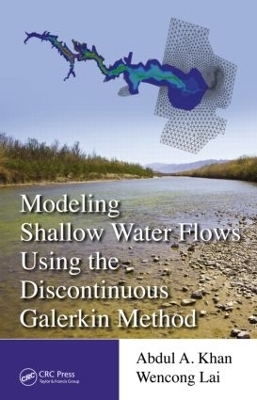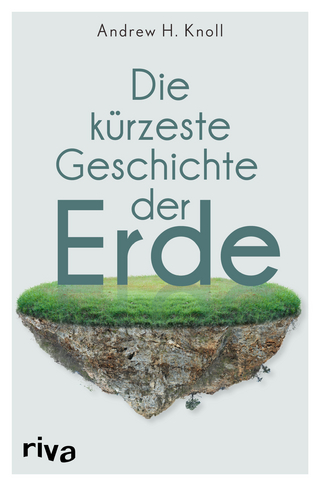
Modeling Shallow Water Flows Using the Discontinuous Galerkin Method
Crc Press Inc (Verlag)
978-1-4822-2601-0 (ISBN)
Computational models offer promise in improving the modeling of shallow water flows. As new techniques are considered, the process continues to change and evolve. Modeling Shallow Water Flows Using the Discontinuous Galerkin Method examines a technique that focuses on hyperbolic conservation laws and includes one-dimensional and two-dimensional shallow water flows and pollutant transports.
Combines the Advantages of Finite Volume and Finite Element Methods
This book explores the discontinuous Galerkin (DG) method, also known as the discontinuous finite element method, in depth. It introduces the DG method and its application to shallow water flows, as well as background information for implementing and applying this method for natural rivers. It considers dam-break problems, shock wave problems, and flows in different regimes (subcritical, supercritical, and transcritical).
Readily Adaptable to the Real World
While the DG method has been widely used in the fields of science and engineering, its use for hydraulics has so far been limited to simple cases. The book compares numerical results with laboratory experiments and field data, and includes a set of tests that can be used for a wide range of applications.
Provides step-by-step implementation details
Presents the different forms in which the shallow water flow equations can be written
Places emphasis on the details and modifications required to apply the scheme to real-world flow problems
This text enables readers to readily understand and develop an efficient computer simulation model that can be used to model flow, contaminant transport, and other aspects in rivers and coastal environments. It is an ideal resource for practicing environmental engineers and researchers in the area of computational hydraulics and fluid dynamics, and graduate students in computational hydraulics.
Abdul A. Khan, Ph.D., is an associate professor in the Glenn Department of Civil Engineering at Clemson University (South Carolina). He received a Ph.D. from the University of Alberta, Edmonton, Canada. After his Ph.D., Dr. Khan worked at the National Center for Computational Hydroscience and Engineering, University of Mississippi, before moving to Clemson University. He has been working in the area of computational modeling of river hydraulics, dam-break flows, and sediment transport for the past 20 years. He has published close to 50 journal articles related to his research work and several papers on river flood and dam-break flow modeling. Wencong Lai, Ph.D., earned a Ph.D. (2012) and an M.S. (2010) in civil engineering from Clemson University, in the area of applied fluid mechanics, and a B.E. (2008) in water conservancy and hydropower engineering from Huazhong University of Science and Technology, China. He is currently a postdoctorate research associate at the University of Wyoming and a member of the CI-WATER’s High-Resolution Multi-Physics Watershed Modeling team. Dr. Lai’s research focuses on computational hydraulics and hydrology. He has developed numerical models for shallow water flows in natural rivers and watersheds using the discontinuous Galerkin finite element method.
Introduction. General formulation of the discontinuous Galerkin method. Discontinuous Galerkin method for one-dimensional nonconservative equations. One-dimensional conservation laws. One-dimensional shallow water flow in nonrectangular channels. Two-dimensional conservation laws. Two-dimensional shallow water flow in channels with horizontal beds. Two-dimensional shallow water flow in channels with bed variations. Pollutant transport. Concluding remarks. References. Index.
| Zusatzinfo | 9 Tables, black and white; 190 Illustrations, black and white |
|---|---|
| Verlagsort | Bosa Roca |
| Sprache | englisch |
| Maße | 174 x 246 mm |
| Gewicht | 430 g |
| Themenwelt | Naturwissenschaften ► Geowissenschaften ► Geologie |
| Naturwissenschaften ► Geowissenschaften ► Hydrologie / Ozeanografie | |
| Naturwissenschaften ► Physik / Astronomie ► Strömungsmechanik | |
| Technik ► Bauwesen | |
| Technik ► Maschinenbau | |
| Technik ► Umwelttechnik / Biotechnologie | |
| ISBN-10 | 1-4822-2601-4 / 1482226014 |
| ISBN-13 | 978-1-4822-2601-0 / 9781482226010 |
| Zustand | Neuware |
| Haben Sie eine Frage zum Produkt? |
aus dem Bereich


